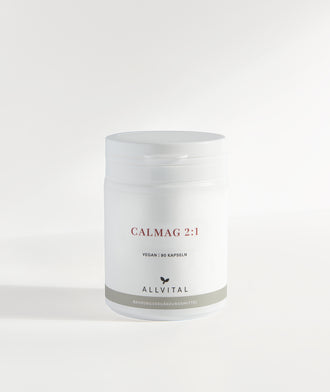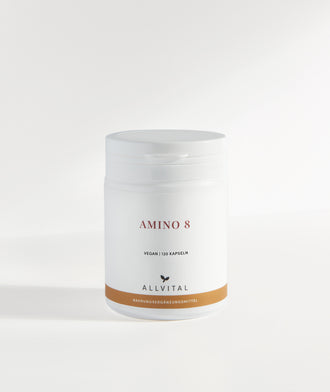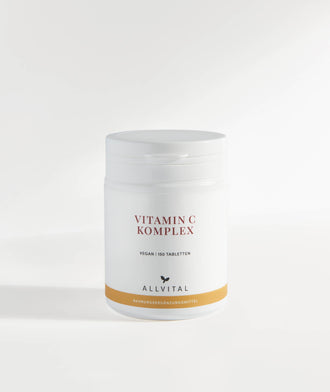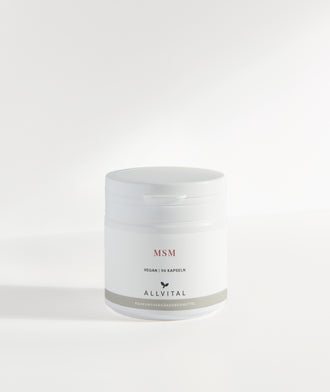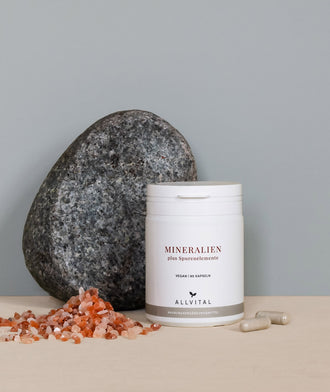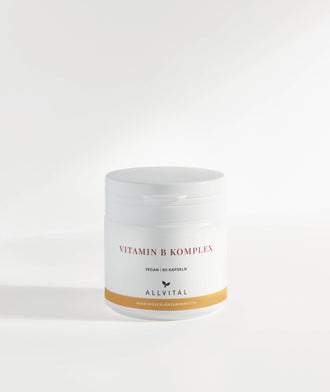
A holistic approach to osteoporosis
Osteoporosis often develops silently—over the course of many years. But with the right knowledge about its causes, prevention, and key micronutrients, bone loss can be effectively counteracted.
Osteoporosis – a silent widespread disease
Osteoporosis is still commonly considered a typical “women’s disease in old age.” While women are particularly at risk after menopause, men and even younger people are increasingly affected. Our modern lifestyle—with lack of physical activity, unbalanced diets, chronic stress, and micronutrient deficiencies—contributes to the gradual breakdown of bone substance at any age.
Osteoporosis is now one of the most common chronic diseases. In Germany, an estimated 6 million people are affected (as of 2025) (1). The growing number of bone fractures reflects the increasing prevalence of the condition: Between 2009 and 2019, the rate of osteoporosis-related fractures in the German population rose by 14 % (2).
These figures show how strongly our lifestyle and environmental factors contribute to the development of so-called lifestyle diseases. Genetics also play a role—but it is often less decisive than many people think.
What is osteoporosis?
Osteoporosis is a chronic condition marked by disrupted bone metabolism. As the disease progresses, bone density decreases and the internal structure of the bone deteriorates. The result: Bones become porous and more prone to breaking—sometimes even under everyday stress. While some degree of bone loss is part of natural aging, it is significantly more pronounced in osteoporosis.
Medically, the World Health Organization (WHO) defines osteoporosis as a bone density more than 2.5 standard deviations below the average for healthy young adults. The measurement is taken using a DEXA scan (dual-energy X-ray absorptiometry), a method that assesses bone density through X-rays. The result is expressed as a statistical value called the T-score:
- T-score between 0 and –1: normal bone density
- T-score between –1 and –2.5: low bone density (osteopenia)
- T-score of –2.5 or lower: osteoporosis
The bones most commonly affected are those with high mechanical load or a trabecular structure, such as the vertebrae, femoral neck, hips, forearms, and wrists.
Symptoms: When bone loss becomes noticeable
Osteoporosis develops gradually and often remains asymptomatic for a long time. Early signs such as diffuse back pain, changes in posture, or loss of height are often overlooked or attributed to other causes. In many cases, the disease is not diagnosed until a fracture occurs.
In more advanced stages, typical symptoms emerge that indicate reduced skeletal stability. These include:
- Bone pain, especially in the back, hips, shoulders, or legs – often described as deep and persistent
- Postural changes such as a hunched back, swayback, or leg deformities (knock knees or bowlegs)
- Loss of height caused by compression of the vertebrae – sometimes accompanied by horizontal skin folds on the back (the so-called “Christmas tree sign”)
- Spontaneous fractures that can occur without external trauma – for example, during everyday movements, lifting a bag, or even coughing
Particularly critical are fractures in the spine and femoral neck, as they are associated with severe pain, reduced mobility, and—especially in older individuals—often with a loss of independence. After a fracture, elderly people face a significantly increased risk of becoming bedridden, needing long-term care, and developing secondary conditions such as thrombosis or pneumonia.
Precisely because osteoporosis progresses silently over time, it is important to recognize risk factors early and to develop a conscious awareness of one’s body—especially from middle age onward.
Causes of osteoporosis
Depending on the primary cause of the impaired bone metabolism, a distinction is made between primary and secondary osteoporosis.
Primary osteoporosis: The most common form
Primary osteoporosis accounts for around 95 % of all cases. It typically results from a combination of the natural aging process and modern lifestyle factors. The main contributing factors include:
- Advanced age and hormonal changes: As we age, bone formation slows down while bone resorption increases. In women, estrogen levels drop sharply after menopause. Estrogen inhibits bone breakdown, so its decline accelerates bone loss. In men, testosterone production also decreases with age, which can likewise lead to reduced bone density—though generally to a lesser extent.
- Lack of physical activity and immobility: Bones require mechanical stimulation such as impact and load to maintain and build bone mass.
- Deficiency of bone-active micronutrients: Vital nutrients such as vitamin D, calcium, vitamin K2, and magnesium are essential for healthy bone metabolism.
- Poor nutrition and acid-forming diets: Diets high in sugar, grains, animal proteins, processed foods, soft drinks, coffee, and similar items promote acidification of the body. To compensate for the pH imbalance, calcium is released from the bones (3). The “Western diet” is undoubtedly a key factor in the rise of osteoporosis over recent decades.
- Smoking and alcohol consumption: Both habits impair bone regeneration, inhibit the absorption of essential nutrients, and promote inflammation in the body.
- Heavy metals and environmental toxins: Environmental pollutants can negatively impact bone metabolism. A key example is the heavy metal cadmium, which may be found in cocoa, seaweed, seafood, and wild mushrooms, and is associated with the softening of bone tissue.
- Low body weight: Being underweight is a risk factor for osteoporosis, as fat tissue contributes to the production of estrogen and other hormones. Additionally, nutrient and micronutrient intake is often inadequate in underweight individuals.
- Chronic stress: Ongoing stress raises cortisol levels—a hormone that promotes bone resorption and inhibits calcium absorption in the intestines.
- Lack of sleep: During sleep, the body regenerates and builds tissue such as bone. Sleep deprivation impairs these vital processes.
- Gut health: Impaired gut function (e.g., due to leaky gut syndrome or dysbiosis) can reduce the absorption of calcium, magnesium, and other key nutrients.
- Silent inflammation: Chronic, low-grade inflammation places constant stress on the body and promotes the breakdown of bone tissue.
Secondary osteoporosis
Secondary osteoporosis arises as a consequence of other conditions such as chronic inflammatory bowel disease, diabetes, hormonal disorders, or cancer. Certain medications—including corticosteroids, antidepressants, or acid blockers—can also negatively impact bone metabolism when taken long-term and thus contribute to the development of osteoporosis.
Prophylaxis: Strengthen your bones before they become brittle
Healthy bones are the result of a healthy lifestyle maintained over many years. The two most influential components in the prevention of osteoporosis are physical activity and nutrition, supported by key micronutrients.
Exercise
Bones are living tissue – and they need regular stimuli to remain strong. Strength training is particularly effective, as it provides a high mechanical load when performed correctly. Other beneficial activities include jogging, walking, and jumping rope, as they create impact forces that stimulate bone formation. Exercise not only supports bone metabolism but also enhances muscle strength and coordination—crucial for fall prevention in older age.
For individuals already experiencing significant bone loss, it's important to consult a physician to determine which types of movement are safe and appropriate to avoid the risk of fractures during training.
Nutrition
An alkaline-rich, nutrient-dense diet with plenty of vegetables, fruits, nuts, and healthy fats supports bone metabolism by balancing the acid-base system and providing essential minerals for bone health. Adequate high-quality protein is also essential—bones are not made of minerals alone but also contain a protein matrix (collagen) that provides structural stability.
Since modern diets often fall short in providing all necessary micronutrients, appropriate supplementation is recommended.
Key micronutrients for healthy bones
The following nutrients play a vital role in bone metabolism:
- Calcium: The most important building block of bone. CalMag 2:1 contains calcium and magnesium in an optimal ratio.
- Magnesium: Essential for converting vitamin D into its active form and regulating calcium metabolism. It is also a structural component of bone tissue.
- Vitamins D3 and K2: Vitamin D3 enhances calcium absorption in the gut, while vitamin K2 ensures that calcium is properly integrated into the bones. Vitamin D3 + K2 contains both.
- Amino acids, vitamin C, and sulfur: Amino acids, vitamin C, and sulfur (in the form of MSM) are important for the formation of the structural proteins in bone.
- Additional micronutrients: We also recommend trace elements such as zinc, silicon, manganese, and boron. These are found in our supplement Minerals plus trace elements. B vitamins are also important for bone health.
Why calcium alone is not enough – and can even be harmful
Many people instinctively reach for calcium supplements to prevent osteoporosis. However, taking calcium alone can do more harm than good—especially when essential cofactors are missing. Without adequate vitamin D3, calcium cannot be efficiently absorbed in the gut. And without vitamin K2, the body cannot direct calcium into the bones. Instead, excess calcium may accumulate in blood vessels and soft tissues.
Conclusion: A holistic approach to bone health
A healthy bone metabolism is the result of many interrelated factors—from physical activity and nutrition to hormonal balance and targeted micronutrient support. Those who take early and holistic action lay the best foundation for strong bones well into old age.
Sources
- Thomasius F, et al. Diagnostik und Therapie der Osteoporose. Deutsches Ärzteblatt. 2025; 122: 12-8.
- Rupp M, Walter N, Pfeifer C, et al. The Incidence of Fractures Among the Adult Population of Germany–an Analysis From 2009 through 2019. Dtsch Arztebl Int. 2021;118(40):665-669.
- Buclin T, Cosma M, Appenzeller M, et al. Diet acids and alkalis influence calcium retention in bone. Osteoporos Int. 2001;12(6):493-499.


